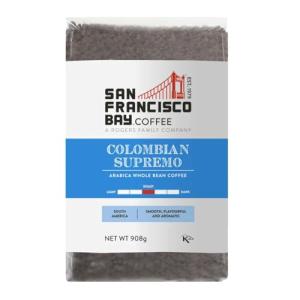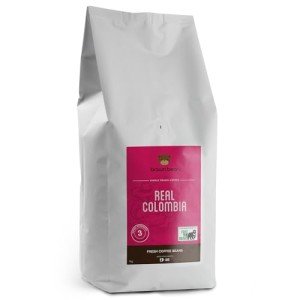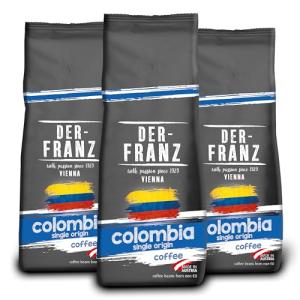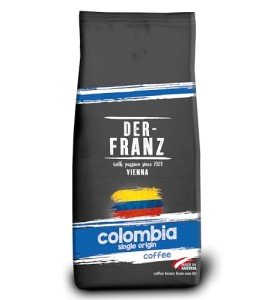Colombian coffee beans are often celebrated for their high quality, rich flavor, and exceptional aroma. For espresso enthusiasts, harnessing this potential can make all the difference between a good espresso shot and a truly memorable one. This guide delves into the unique qualities of Colombian coffee beans, the methods of brewing espresso from them, and tips to get the most flavor from these beans.
The Allure of Colombian Coffee Beans
Colombia's diverse geography and optimal climate create ideal conditions for coffee cultivation. The country sits near the Equator, benefitting from consistent sunlight, varying altitudes, and rich volcanic soil—elements that contribute to a balanced and flavorful coffee. Colombian coffee beans are typically washed, which not only enhances their brightness but also highlights their distinct flavor profiles.
Flavor Characteristics
Colombian coffee beans, particularly those grown in regions like Antioquia, Quindío, and Huila, offer a complex flavor profile. Here are some common tasting notes:
- Fruity: Many Colombian coffees exhibit bright acidity, with notes of citrus or berry.
- Nutty: Some beans provide a chocolatey or nutty finish.
- Floral: A subtle aroma of jasmine or other floral notes can often be detected.
- Caramel: A sweetness reminiscent of caramel or toffee is prevalent in many Colombian beans.
This blend of flavors makes Colombian coffee beans ideal for espresso, resulting in rich, well-balanced shots that have a satisfying crema.
Selecting the Right Colombian Coffee Beans for Espresso
When it comes to preparing espresso, choosing the right beans is crucial. Here are some factors to consider:
- Bean Type: Colombian coffee is mainly Arabica, which is preferred for its superior flavor and less bitter profile compared to Robusta.
- Roast Level: Espresso thrives on the right roast. Darker roasts can add richness but may mask some of the beans' natural flavors. Medium roasts often preserve floral and fruity notes.
- Freshness: Always opt for fresh beans. Look for roast dates and avoid pre-ground coffee to ensure maximum flavor extraction.
Recommended Colombian Coffee Brands for Espresso
- Devoción: Renowned for its direct sourcing methods and vibrant, fresh flavors.
- Cafe San Alberto: Offers a rich, sweet coffee with a nuanced flavor profile.
- Intelligentsia: Known for their commitment to quality and craft.
Brewing Colombian Coffee Beans for Espresso
Brewing espresso is an art that requires precision, timing, and the right tools. Here's a detailed guide to help you get the most out of your Colombian coffee beans:
Equipment Needed
- Espresso Machine: A quality machine that allows for personalized adjustments.
- Grinder: A burr grinder is essential for achieving consistent grind size.
- Scale: For precise measurements of coffee and water.
- Tamper: To compress the coffee grounds evenly.
Steps to Brew the Perfect Colombian Espresso
- Select the Beans: Choose high-quality, freshly roasted Colombian coffee beans.
- Grind the Coffee: Use a burr grinder to achieve a fine grind (similar to table salt). Aim for a consistency that can hold a small shape when squeezed together.
- Measure the Coffee: For a double shot (about 2 ounces), use approximately 16-18 grams of coffee.
- Tamp the Grounds: Transfer the coffee grounds to the portafilter and tamp them evenly and with consistent pressure.
- Extract the Espresso: Lock the portafilter in your espresso machine and start the extraction process. Aim for a brew time of about 25-30 seconds.
- Serve and Enjoy: Once brewed, serve immediately. You can enjoy it straight or as a base for other beverages like lattes or cappuccinos.
Tips for the Best Extraction
- Water Quality: Use filtered water to avoid any chemical taste that could interfere with the coffee.
- Temperature Control: Optimal extraction occurs between 190°F and 205°F (88°C to 96°C).
- Clean Equipment: Ensure all equipment is clean to maintain flavor integrity.
FAQs
1. Can any Colombian coffee bean be used for espresso?While most Colombian coffee beans can be used for espresso, opting for medium to dark roasts will typically yield the best results.
2. How should I store my Colombian coffee beans?Store your coffee beans in an airtight container, away from light, heat, and moisture. A cool, dark place is ideal.
3. What is the ideal grind size for Colombian espresso?
The ideal grind size is fine, similar to table salt. This allows for proper extraction during brewing.
4. How can I enhance the flavor of my Colombian espresso?
Experimenting with brewing times, water temperatures, and adding complementary ingredients like dairy or spices can enhance the flavor profile.
5. Can I make espresso with decaf Colombian coffee?
Yes! Decaf Colombian coffee can still produce a rich shot of espresso, enabling you to enjoy the flavors without the caffeine.
Colombian coffee beans are more than just a popular coffee choice; they represent a tradition, culture, and an art form in the world of espresso. Understanding the unique characteristics, selecting the right beans, and perfecting your brewing technique can transform your coffee experience. Next time you savor a delicious espresso shot made from Colombian coffee, you’ll appreciate the dedication and skill that brought it to your cup. Raise your mug high, as it is not just coffee; it's a journey through the rich landscapes of Colombia.






